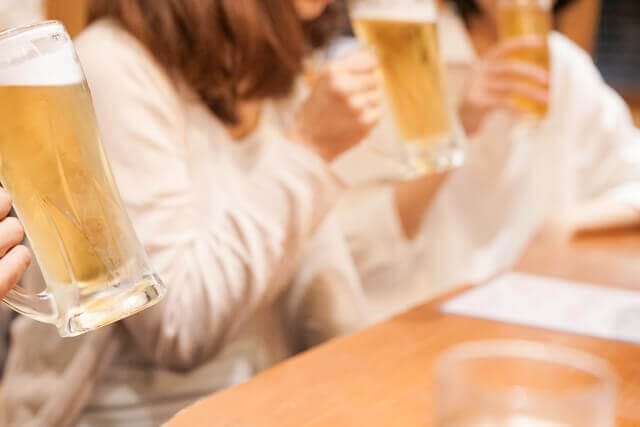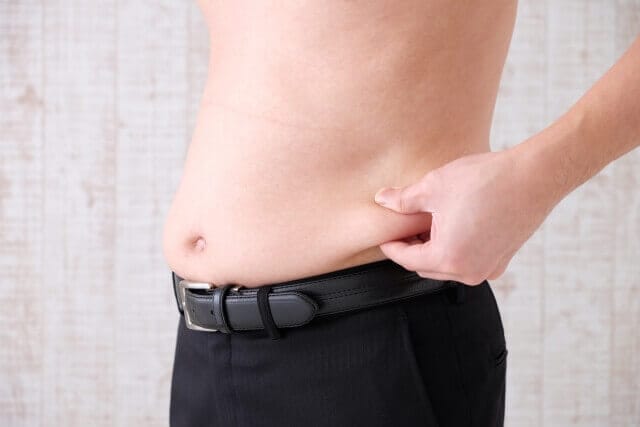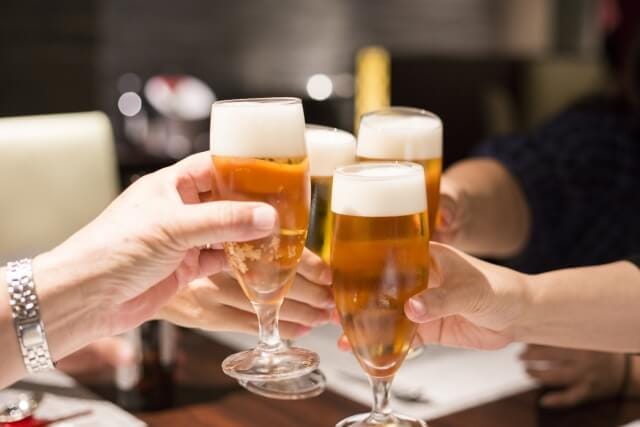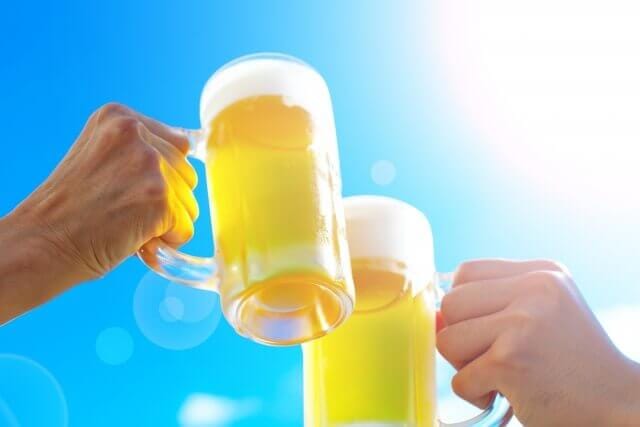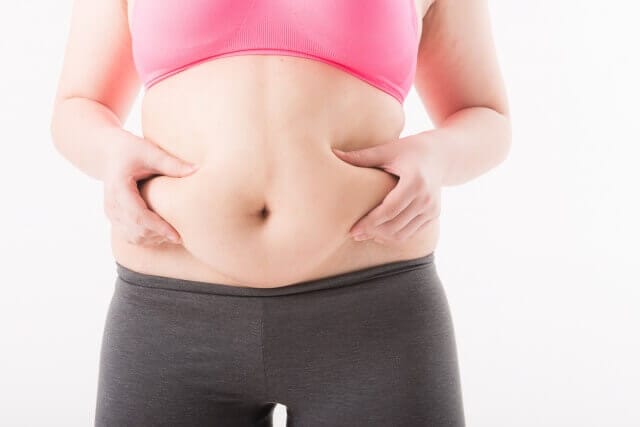What is your image of beer?
As a positive impression,
“A refreshing sensation is obtained from the refreshing taste and good throat.”
“It makes me forget about the worries and stress of work.”
And so on.
On the other hand, as a negative impression,
"It's bitter and not delicious."
“Because it contains sugar, drinking it makes you beer.”
And so on.
This time, I would like to explain whether you really get fat if you drink beer, or how much calories are in alcoholic beverages, mainly beer.
It's easy to misunderstand, so please check it out.
What is the identity of a beer belly?
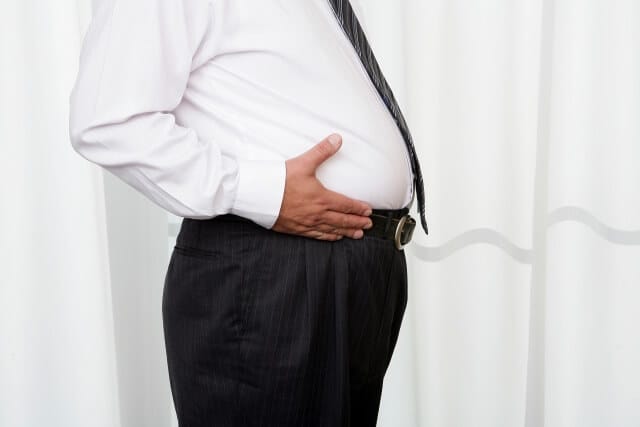
A beer belly is a stomach with a lot of meat on the belt..
This is called not only in Japan but around the world. (In English, beer belly)
The word “beer belly” has spread the image of becoming fat when drinking beer.
Is the beer belly really caused by drinking too much beer?
In a study by German and Swedish researchers published in 2009, it was conducted on more than 2 million men and women, and the content compared the waist circumference of a group that drank beer and a group that did not drink much beer It was a thing.
After a survey over 8 years,The probability of becoming a beer belly with fat around the waist did not change much in either groupThe result was given.
In 2011, a similar study was conducted in Japan, reporting that there was no difference in waist between those who mainly drink beer and those who drink alcohol other than beer.
As described above,In recent years, many studies have reported that beer and beer belly are not related..
From these research results,The cause of beer belly may be due to lack of diet and exerciseIt is speculated.
There is no direct cause for beer and beer belly.
HoweverResearch results also show that people who drink a lot of beer and eat a lot of snacks tend to be obeseSo when you drink beer, you must be careful not to drink too much or eat too much.
Is alcohol high in calories? Low?
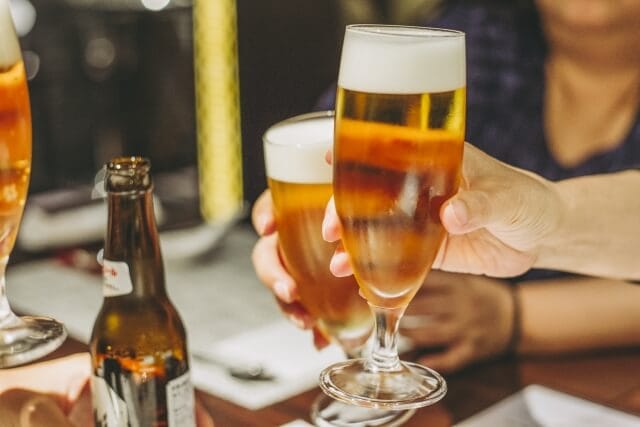
Many people have the image that alcohol is the cause of obesity.
Is alcohol really the cause of obesity?
From here, I would like to introduce the relationship between alcohol and obesity.
Let's check the calories of alcohol first.
The calories in alcohol7 kilocalories per gram.
Because carbohydrates and proteins are 1 kilocalories per 4g, and lipids are 1 kilocalories per 9g, they are located in the middle.
Alcohol differs from carbohydrates, proteins, and lipids in that not all are used in the body.
Some are used to increase oxygen consumption and increase body temperature due to alcohol consumption, so they are excreted directly from exhaled breath and urine.
In the first place, alcohol cannot accumulate in the body, so the remaining alcohol is also metabolized immediately.
Various studies have been conducted on the relationship between alcohol consumption and obesity.
The results vary depending on the study,It should be noted that drinking alcohol does not change weight in a short period of time, but there are many results that are related to obesity in the long term.I can say that.
In other words, Drinking alcohol for a long time increases the risk of becoming obeseabout it.
The long-term consumption of alcohol leads to obesity due to alcohol digestion.
Alcohol is digested in the liver as it enters the body. In the liver, alcohol is preferentially digested,Digestion of sugar and lipid is postponed, and body fat breakdown is also suppressedWill be.
If this trend continues for a long time, the body fat will be reprimanded as a result, resulting in obesity.
As I mentioned earlier, alcohol has only about 7 kilocalories per gram, and not all is used as energy.
for that reasonAlcohol is low in caloriesI feel like I can judge.
Points to know about the calories of alcohol
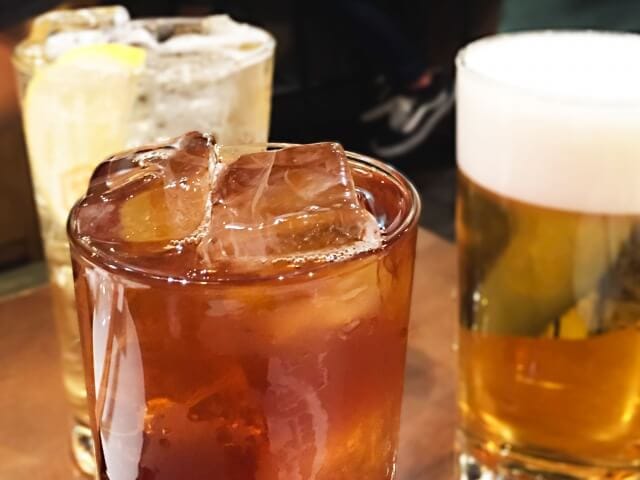
From the above, you can see that the calories in alcohol are not so high.
From here, I will introduce more specifically about the calories of alcohol, focusing on beer.
What is the sugar mass of beer, happoshu, and third beer How many calories?
350ml canned beer is about 1 yen per 200 bottle, no matter how cheap you can buy it.
This is fine for people who drink beer only once or twice a week, but for those who drink beer every day, it is a significant expense.
Therefore, beer-taste alcoholic beverages called Happoshu and Third Beer are gaining popularity.
What is the difference between beer and happoshu?
The difference between beer and HapposhuAmount of malt usedIt is in. In Japan, there is a law called the Liquor Tax Law, and in order to call it beer, the usage rate of malt, which is a raw material, must be at least two times the 3.
Since the malt use rate of Happoshu is around 25%, it is cheaper because the liquor tax is lower than that of beer and the cost is reduced.
Happoshu is not only cheap. Happoshu can enjoy a refreshing and refreshing taste, although the amount of malt used is low, and the aroma and richness do not reach that of beer.
Recently, beer separation is progressing mainly by young people, and the number of people who are not good at beer flavor is increasing.
For these people, Happoshu is a cheaper and more cost-effective drink that can be tasted better than beer.
The third beer uses neither wheat nor malt as a raw material.
As a result, liquor tax is even lower than Happoshu. So what ingredients are used in the third beer?
The answer is,Soy protein and cornis. Because it uses soy protein and corn as raw materials, it features a refreshing drinking experience.
The point here isThe beer, the sparkling liquor, and the third beer have the same calorie and sugar mass..
Because there is little fragrance and richness, Happoshu and the third beer tend to think that calories and sugar mass are low, but it is not such a thing, so it can be said that it is necessary to grasp firmly.
Non-alcoholic beer is low in calories because it does not contain alcohol, but its sugar mass is not much different from beer.So let's remember together.
Calorie off, good points of zero sugar, points to watch out for
Happoshu and the third beer often display “calorie off”, “sugar off”, and “sugar free”.
From here, I would like to introduce the good points of calorie off and sugar-free products, as well as points to be aware of.
Alcoholic beverages tend to have higher calories as the sugar mass or alcohol content increases, but residual sugar can be reduced by increasing the “fermentation level” of the carbohydrates contained in the ingredients.
Calorie-off products have fewer calories than beer and other happoshu by reducing sugars and lowering alcohol content.
When choosing a sugar-free product, pay attention to the alcohol content.
For products with a high alcohol content even though they are labeled as sugar off, the calories themselves may be higher than the beer.
Sugar off = not low caloriesRemember that.
A sugar-free product is manufactured so that no sugar contained in the raw material remains.
If the residual sugar per 100ml is less than 0,5g, it can be displayed as zero carbohydrate.
Keep in mind that zero-sugar products are not free of any sugar.
Also, as with sugar-free products, the calorie content of sugar-free products varies depending on the alcohol content.
The higher the alcohol content, the higher the calories.So be careful.
Many sugar-free products and zero-sugar products have lower calories than beer.
Therefore, it can be said that it is recommended for those who want to drink beer on a diet.
But,That's just the right amount, and low calories and sugars can cause obesity if you drink too much..
Let's enjoy consciousness of an appropriate amount even in sugar-free and sugar-free happoshu.
Ingredient table and calories of alcohol
In alcoholic beverages, the amount of sugar is determined by the amount of residual sugar, so the sweeter alcohol has more sugar and higher alcohol content..
Also, alcohol with a higher alcohol content tends to have higher calories.
for that reason,Generally, the amount of residual sugar is higher and the calorie is higher than sweet liquor.It can be said.
In general, when examining the calories of alcoholic beverages, you can refer to the food composition table.
However, the nutritional ingredients in the ingredient list contain standard ingredient values, and accurate calories cannot be calculated depending on the type.
From here, I would like to introduce the points to determine the actual calories by type.
● Sake
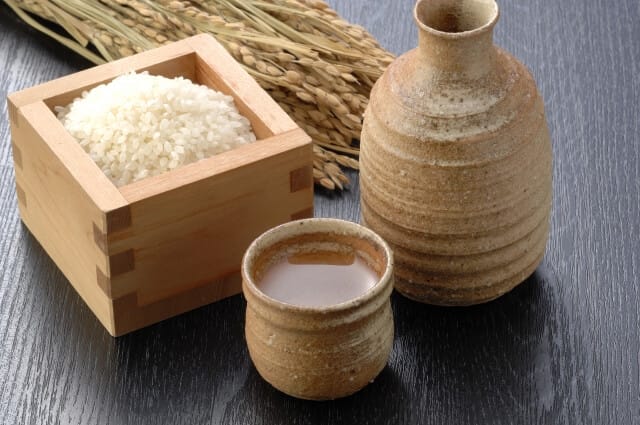
Sake is sweet and dry, but it does not mean that the amount of sugar remaining is as sweet as wine.
The sweetness and dryness of sake is indicated by the balance with the acidity, not the remaining amount. Even if the sake has a high amount of residual sugar, it does not feel very sweet.
Sake is high in calories if you drink it and feel very sweetLet's judge.
● Wine
For wine, the amount of residual sugar varies from close to 0g per liter to over 200g.
In addition, the range of alcohol content is wide, from 7% to 15%.
Wine is high in calories when sweet and high in alcoholLet's judge.
● Fruit liquor
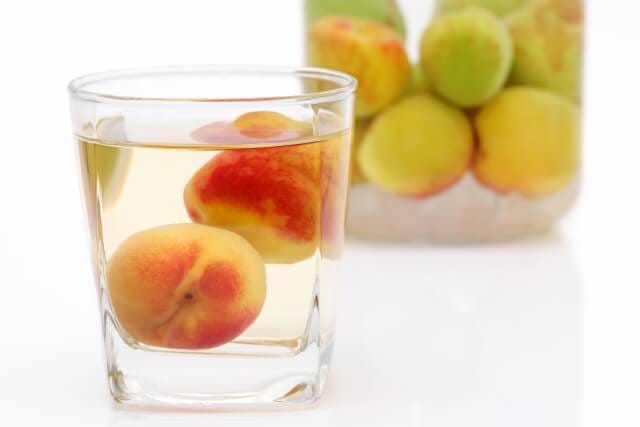
Fruit liquor such as plum wineCalories vary greatly depending on the amount of sugar when pickled.
For example, if you dip it without using any sugar, it will be close to the calories of the liquor itself, and if you use a lot of sugar, it will be much higher than the calories in the ingredient list.
Fruit wine that has a strong sweetness is high in calories.Let's judge.
● Beer
As I introduced earlier,Beer, Happoshu, and third beer have almost the same sugar mass and calories.
Therefore, there is no problem even if you consider calories according to the ingredient list.
What is the appropriate amount of alcohol?
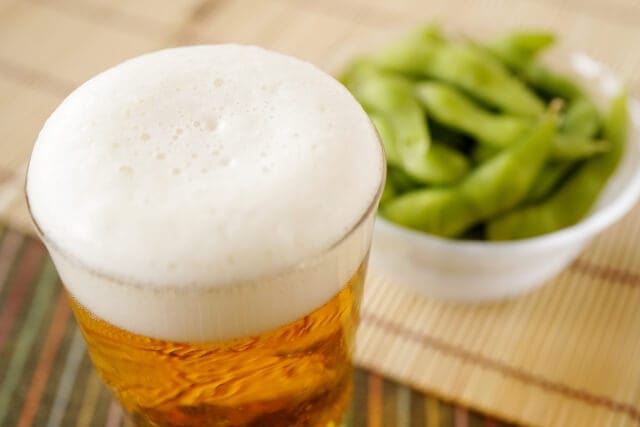
The expression that it is desirable to take “appropriate amount” of alcohol is often seen.
So how much is the “appropriate amount”?
A lot of research has been done on alcohol.
Based on the results of various studies, it is generally recommended that the risk is the lowestAlcohol consumption per 1 day is 20g.
The amount of alcohol 20g converted to beer is about 500ml.
This means that 1 long cans are the right amount of alcohol to take on 1 days.
If there are not enough 1 long cans per 1 day, we recommend setting a rest day.
As I mentioned earlier, the recommended amount of alcohol generally recommended is 1g per 20 day.
This is the amount with the least risk of illness and is not dangerous.
In many studies,We have analyzed that if you consume more than 300g of alcohol in a week, there is a higher risk of harm to your body.It can be said.
If you want to drink more than 1 long cans on 1 days, make a week of non-alcohol on 2 days a week as a resting day.
Doing so can significantly reduce the risk of illness.
Establish weekly rest days for 2 days and reduce alcohol intake per 1 day to 60g or lessIt can be said that it is safe for the time being.
If you have a habit of drinking a lot of alcohol, we recommend that you first aim for this standard.
Summary
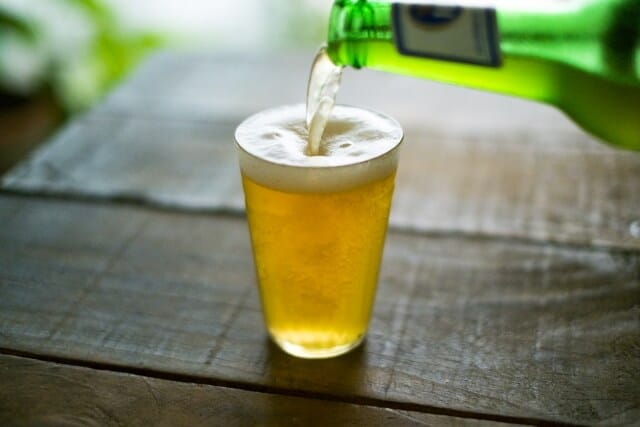
This time, I have introduced the calories of alcohol, focusing on beer.
It is generally recognized that alcohol = fat, but the calorie of alcohol itself is low, so it can be said that the direct effect is light.
HoweverLong-term alcohol consumption is likely to cause obesityTherefore, try to take an appropriate amount of alcohol.

